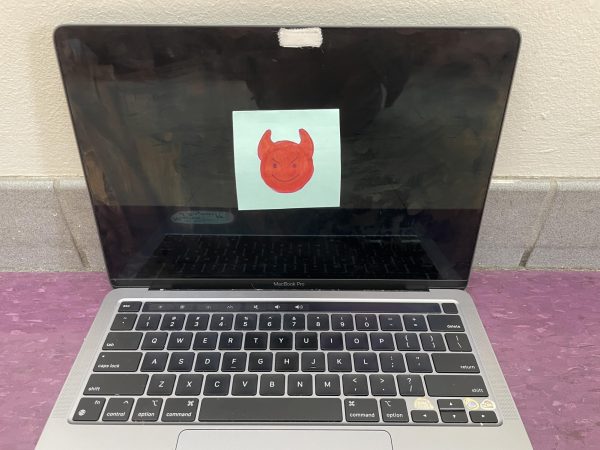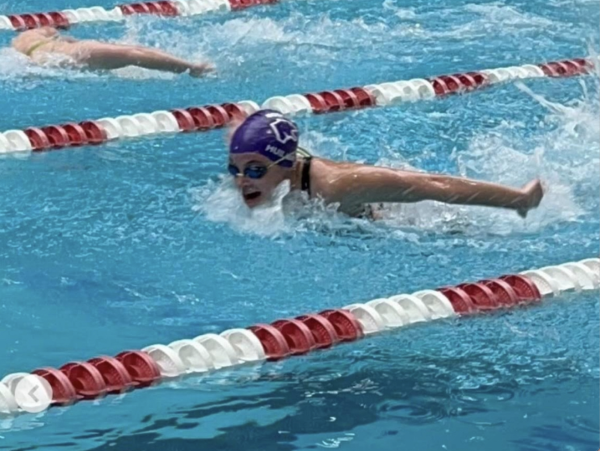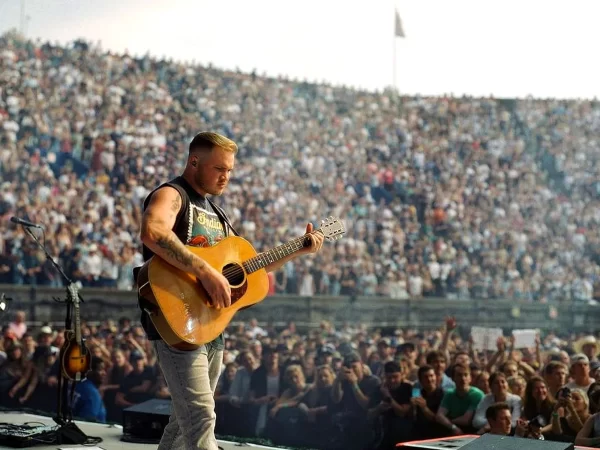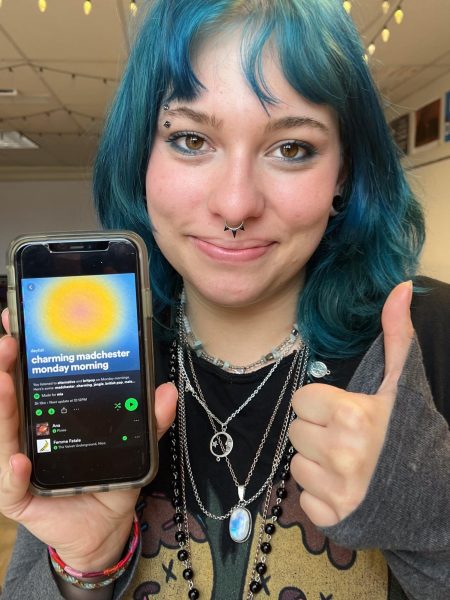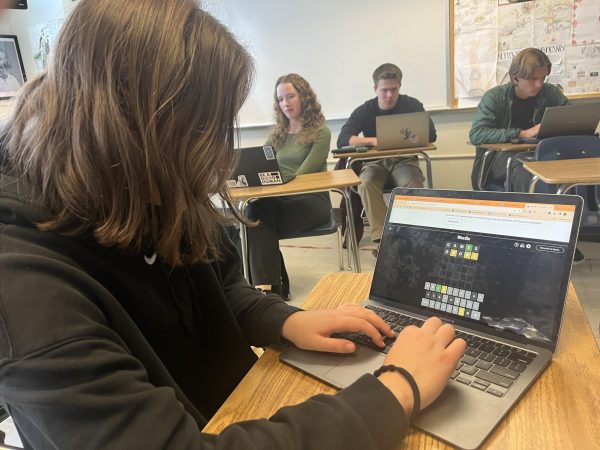The Rise, Ruin and Restoration of the LOYO Rally
6th period LOYO dancers flaunt their skills as photographed from the audience packed into the Pit.
Living on your own! It’s a challenge that looms in all our futures, and the fantastically popular course offered to seniors at Boulder High designed to prepare them for the challenges of the adult world that fulfills the required health credit for graduation in BVSD. Affectionately dubbed LOYO by the school community, it is a class designed to teach young adults the fundamentals of, you guessed it, living on your own: homeownership, renting, personal financial management, healthy relationships, the basics of substance abuse and other pertinent issues. However, one part of the curriculum is less obviously applicable in the real world. The beginning of second semester is spent coordinating a three to five minute dance routine with the aim of breaking down social barriers in the class before launching into discussions of more serious subjects like abusive relationships, mental health and substance abuse. Collaborating as a class forces an environment of mutual trust and comfort that is imperative to facilitate a productive conversation on the heavier topics of second semester. These efforts culminate in the LOYO Rally, a friendly dance-off between all the LOYO classes performed before hand-picked teacher-judges for a roaring crowd of students in the Pit.
The LOYO Rally is legendary. To see so many seniors from diverse backgrounds — Poms, jocks, artists, drama queens, AP students, ILC students, wallflowers and overachievers alike, and everything in between — dancing, collaborating and genuinely enjoying themselves is a dazzling display of solidarity that inspires more school spirit than any project the administration could hope to ever come up with. As the student attendance would indicate, this unofficial rally is actually the most popular of any rally throughout the school year. It demonstrates the ability of the senior class to work cohesively and strengthen the bonds within their own community, and its tradition should be preserved for future generations to look to and live through.
Mrs. Clarke sat down with me on Wednesday, Feb. 26 to discuss the history of the LOYO Rally, the event’s controversies and what the future of LOYO will look like. The LOYO Rally began as a LOYO “wedding,” a much more antiquated celebration of the seniors; over the years it has evolved into the more modern and inclusive tradition that Boulder High knows today. Five years ago, when Mrs. Clarke took over instruction of the class, she inherited the controversies that tailed its tradition. While Mrs. Clarke enumerated the many benefits the rally provides to her classes and Boulder High in general, she said that it is an incredibly stressful part of her school year. As just one teacher, she must wrangle 165 rowdy seniors, make sure the technical aspects of lighting and sound for the event are running smoothly and put on a production that makes the whole school community—staff and students alike—proud to be a part of something greater.
Clarke mentioned that the rally itself makes up “like, 10 percent of the whole [LOYO] experience.” The point of spending the first month back from break dancing is, paradoxically, not to put on a dance. Of greater importance than an individual’s ability to buss down is the students’ ability to work as a cohesive unit and step outside of themselves in a new and vulnerable way. Participating in the dance forces students to practice skills of humility and active listening, which, as Clarke noted, are difficult to teach with “pen and paper learning.” An additional, inadmissible benefit that students reap from the rally comes from the way it shakes up the classroom dynamics. Students who may not usually thrive in an academic environment are given a platform to be recognized as leaders, their talents and passions finally given a time to shine. It coaxes shy students out of their shells and shuts up the walking encyclopedia, leveling the playing field for students from all different backgrounds for possibly the only time in their entire educational careers. There’s a tangible shift in classroom relationships that facilitates useful discussions as the LOYO curriculum moves forward to cover more sensitive real-world topics such as healthy communication, substance abuse, relationship issues and mental health.
On Feb. 6, the LOYO seniors gathered and geared up in the Pit for their final performance, which was to take place that afternoon during advisory. While the technical side went relatively smoothly, the school’s pride and dignity took a blow due to the unfortunate actions of certain individuals. As the second-period class rushed to the spotlights and the successful first-period performers retreated to their seats, the air was thick with anticipation for another stunning performance. Then “fuck this shit” shattered that stilled atmosphere. After the first expletive was uttered the crowd was already in an uproar. One of the dancers, who had been elected to say something along the lines of “aw nah, let’s take it country with this dance,” had instead grabbed the microphone and put his own embellishments on the expression. The crowd settled as second period’s performance got underway, but the damage had been done.
Parents in the crowd got in a tizzy, rumors flew of a snap decision by the administration to cancel the rally going forward, and the mistrust between the students of second period LOYO detracted from the rally and the experience of all involved. It was heartbreaking as one of Clarke’s students to listen to her explain the fallout from a few selfish actions.
Thankfully, this tale has a happy ending. Clarke explained how going through “the incident” with her classes forced them to grow closer in unprecedented ways. Her ultimate goal of fostering classroom community was still met. Moreover, seniors Ava Anglin, Elijah Boykoff, Derek Dorado and Metkel Tewelde took it upon themselves to meet with Dr. Hill on Feb. 21 to discuss the positive impacts of the class and present evidence for its merit as a Boulder High tradition. To add to the consensus of the rally’s benefit, on Feb. 20, the Governance Team met and determined the benefit for the school community. The resounding conclusion was that the school community sees value in the rally, and Dr. Hill maintained that any rumors of cancellation in the first place had been just that: rumors.
Future generations will still have the opportunity to take part in this LOYO tradition if they sign up for the class as a senior. Clarke’s aims to apply social and emotional learning out of the realm of pen and paper for a portion of the school year will be free to continue into the foreseeable future. Long live the LOYO Rally!



